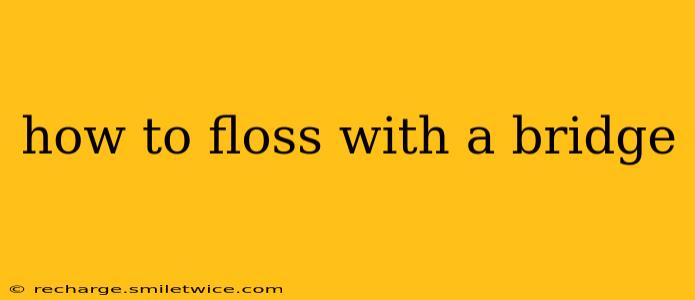Maintaining excellent oral hygiene is crucial for everyone, but it takes on added importance when you have a dental bridge. A bridge, a prosthetic device replacing one or more missing teeth, requires diligent cleaning to prevent food particles from becoming trapped and to avoid gum disease and decay around the abutment teeth (the natural teeth supporting the bridge). Flossing with a bridge is different than flossing natural teeth, but with the right technique, it’s perfectly manageable.
Why is Flossing With a Bridge So Important?
Failing to floss properly around your dental bridge can lead to several serious dental problems:
- Gum Disease (Gingivitis/Periodontitis): Bacteria thrive in trapped food particles, leading to inflammation and infection of the gums. This can eventually result in bone loss and tooth loss.
- Decay Around Abutment Teeth: The teeth supporting the bridge are vulnerable to decay if food particles aren't removed effectively.
- Bad Breath (Halitosis): Trapped food particles contribute significantly to unpleasant breath odor.
- Bridge Failure: In severe cases, lack of proper hygiene can contribute to the loosening or failure of the bridge itself.
What's the Best Way to Floss With a Bridge?
The key is using the right tools and technique. Here's a step-by-step guide:
1. Choose the Right Flossing Tool:
- Dental Floss Threaders: These are thin, flexible pieces of plastic or metal with a loop at the end. You thread the floss through the gap between the bridge and your gums, then use the floss to clean the area. This is often the most effective method for most bridges.
- Superfloss: This type of floss has three sections: a stiff end to thread under the bridge, a spongy section for cleaning the pontics (artificial teeth), and a regular floss section for cleaning adjacent teeth. This is a good option if your bridge is quite large or has complex contours.
- Interdental Brushes: These small, cylindrical brushes are designed to clean between teeth and around dental work. Choose a size appropriate for the space under your bridge. Your dentist can advise you on the right size.
2. The Flossing Technique:
- Thread the Floss: Gently thread your chosen tool (floss threader, superfloss stiff end, or interdental brush) under the bridge, working it carefully to avoid damaging the gums.
- Clean the Bridge: Use a gentle back-and-forth motion to clean the sides of the pontics (artificial teeth) and the abutment teeth.
- Clean Under the Bridge: If using floss threaders or superfloss, curve the floss around the pontics and gently guide it along the gumline. Use gentle pressure and avoid snapping the floss, as this could damage the gums or bridge. With interdental brushes, gently insert and withdraw the brush without forcing it.
- Rinse: Thoroughly rinse your mouth with water or mouthwash to remove dislodged food particles and bacteria.
How Often Should I Floss With a Bridge?
You should floss your teeth, including around your bridge, at least once a day, preferably before bedtime.
What if I'm Having Trouble Flossing My Bridge?
If you're struggling to floss effectively, don't hesitate to ask your dentist or dental hygienist for help. They can show you the proper technique and recommend the best flossing tools for your specific bridge.
What Other Oral Hygiene Practices Should I Follow?
In addition to flossing, it's crucial to:
- Brush your teeth twice a day: Use a soft-bristled toothbrush and fluoride toothpaste. Gentle circular motions are recommended.
- Use an antimicrobial mouthwash: This can help to kill bacteria and reduce plaque buildup.
- Schedule regular dental checkups: Visit your dentist for professional cleanings and checkups at least twice a year, or as recommended by your dentist.
Can I Use Water Picks with a Bridge?
Water picks (oral irrigators) can be a helpful supplement to flossing, but they shouldn't replace flossing entirely. They can help to remove food particles and rinse around the bridge, but they may not be as effective at removing plaque and bacteria from the gumline as floss. Always check with your dentist to ensure it’s safe for your specific bridge design.
By following these tips and maintaining a consistent oral hygiene routine, you can keep your bridge clean and healthy, preserving your smile and overall health. Remember, consulting your dentist is always the best way to ensure you are using the proper techniques and tools for your specific situation.
